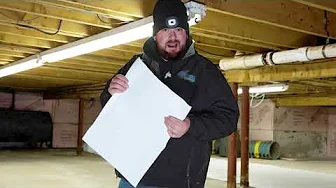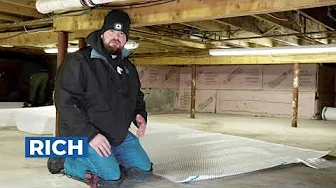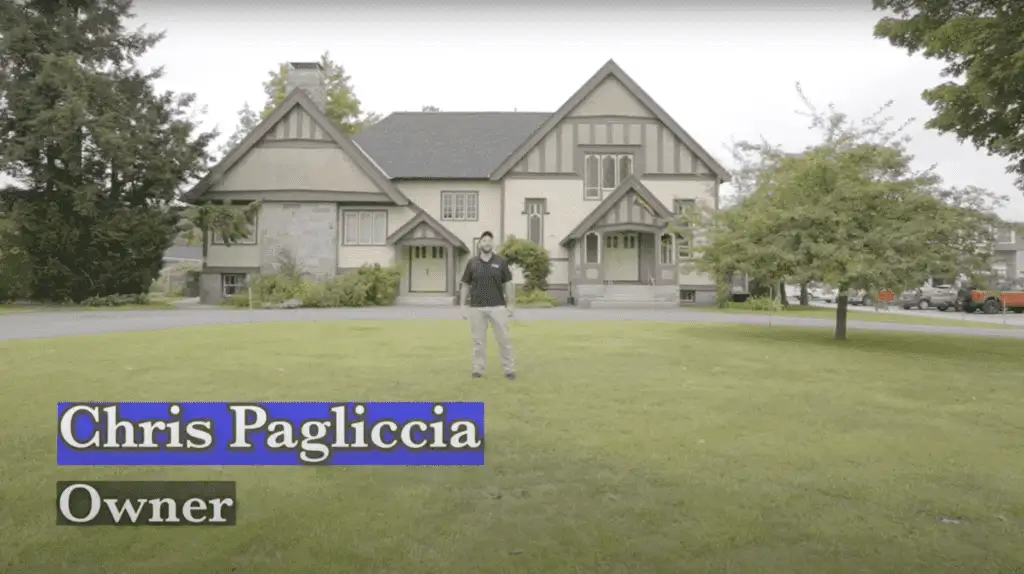Foundation Crack Repair Dover MA
Foundation cracks are more than cosmetic concerns—they can signal deeper structural issues. Living in Dover, MA, where changing seasons can stress your home’s foundation, it’s important to identify and address cracks before they worsen. Proper repair not only preserves the structural integrity of your property but also protects its value.
Real People - Real Great Results
Crawl Space Video Playlist
Why Foundation Cracks Occur
Foundation cracks might seem like a passing inconvenience, but their origins often point to an interplay of natural forces and human oversight. Below are the primary culprits in Dover, MA’s climate and terrain:
- Climate Impact: You can blame New England’s weather for a lot, including foundation cracks. The freeze-thaw cycle is relentless—soil expands when it freezes and contracts when it thaws, putting strain on foundation walls. Over time, this seasonal stress creates the perfect recipe for cracks.
- Soil Conditions: Living in an area with clay-heavy or expansive soils? These are the chameleons of the ground world. They swell when drenched and shrink when they dry out. Your foundation pays the price by bowing or cracking under the fluctuating pressure.
- Settling: No house is exempt from gravity. Over the years, every home settles into the earth, and that slight shift can lead to small cracks. While many are harmless, they’re worth keeping an eye on—what starts tiny can evolve into a bigger headache.
- Water Damage: Water is sneaky. Whether it’s from poor grading, clogged gutters, or torrential downpours, moisture can build up around your foundation. When water seeps into cracks, it weakens the structure over time. Left unchecked, it’s less a question of if you’ll have bigger problems but when.
Understanding the why behind your foundation cracks is key. Every crack tells a story—some are benign, while others scream for attention. Before assuming the worst (or ignoring the problem), figure out what’s causing the issue so you can fix it properly.
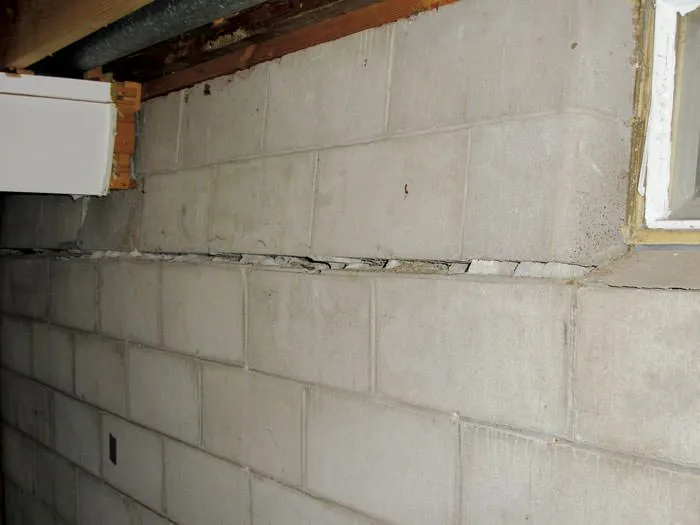
When To Be Concerned About Foundation Cracks
Not all cracks are created equal, and knowing when to sound the alarm can save you a ton of headaches—and money. Some cracks are harmless; others roll out the red carpet for costly repairs. Here’s how to tell the difference:
- Hairline Cracks: Think of these as your foundation’s laugh lines. They’re pretty common in new homes or due to minor settling. These aren’t a five-alarm fire, but keep an eye on them. If they widen over time, it could signal something more serious.
- Horizontal Cracks: These are not the good kind. They can mean soil or hydrostatic pressure is pushing against your foundation, like a slow-building tidal wave of stress. Ignore them, and you might be looking at a bowing wall or water intrusion—both expensive problems. Act fast.
- Diagonal Cracks: These usually show up near corners and are often the result of uneven settling. While less panic-inducing than horizontal cracks, they’re still a sign your foundation’s taking a hit. Pro tip: Call in a professional before they call the shots.
- Stair-Step Cracks: Brick or concrete block walls are prone to these. They’re not just ugly—stair-step cracks scream “shifting soil” or poor drainage. They can snowball into major structural damage if left unattended.
The bottom line? Regular self-inspections (or better yet, a professional once in a while) can help you catch cracks before they level up into bigger, scarier problems. If you’re guessing whether to worry, it’s usually safer to have someone experienced take a look.
Foundation Crack Repair Methods
Foundation cracks are like loose threads in a sweater—ignore them long enough, and they unravel into much bigger problems. Whether it’s a hairline fracture or a gaping horizontal split, the right fix hinges on choosing the right method. Here’s a breakdown of the most effective approaches:
- Epoxy or Polyurethane Injections: Sometimes, the simplest solutions are the best. For small cracks (less than 1/4 inch), epoxy or polyurethane injections act like superglue for your foundation. These materials seal the crack from the inside out, preventing water from sneaking in and worsening the damage. While this method isn’t a solve-all for structural issues, it works wonders for stopping leaks and adding a layer of reinforcement. Think of it as patching a tire—you’re keeping things from going flat, not rebuilding the whole wheel.
- Carbon Fiber Reinforcement: This is where you level up. If your cracks are telling a story of stress—be it from soil pressure or shifting support—carbon fiber straps step in as a lightweight yet incredibly strong way to brace the wall. After being bonded to the surface, these straps essentially lock things in place, preventing further movement. It’s less invasive than other methods and ideal for vertical or diagonal cracks. Bonus: carbon fiber doesn’t rust, so once it’s installed, it’s there to stay.
- Underpinning: When your foundation is sinking like a ship, you don’t just bail out water—you stabilize it. Underpinning involves driving steel piers deep into the ground until they hit stable soil, lifting the foundation back into position. It’s not a quick fix; this process is for homes with extensive settling issues or major structural concerns. Like putting your house on stilts, underpinning ensures your foundation has the support it needs to stay put long-term.
- Grading and Drainage Solutions: Water is a sneaky culprit in foundation troubles. If poor drainage is puddling around your home after every rainfall, cracks are bound to follow. Regrading the soil around your property and adding proper drainage systems, like French drains or extended downspouts, reduce water pressure on the foundation. This step often works as a preventative measure but can also help mitigate ongoing issues when paired with other repairs.
- Wall Anchor Systems: Bowing walls are a red flag that soil movement is wreaking havoc on your foundation. Enter wall anchor systems: a method that pulls the walls back into a stable position using anchors buried in the soil outside. Once connected to the foundation, these anchors hold everything in place, stopping further movement. This fix isn’t subtle, but when your walls are crying for help, subtlety isn’t what you need.
By taking a strategic approach tailored to your specific foundation problem, you can stop cracks in their tracks and avoid more serious structural issues down the road. No guesswork—just solutions that work.
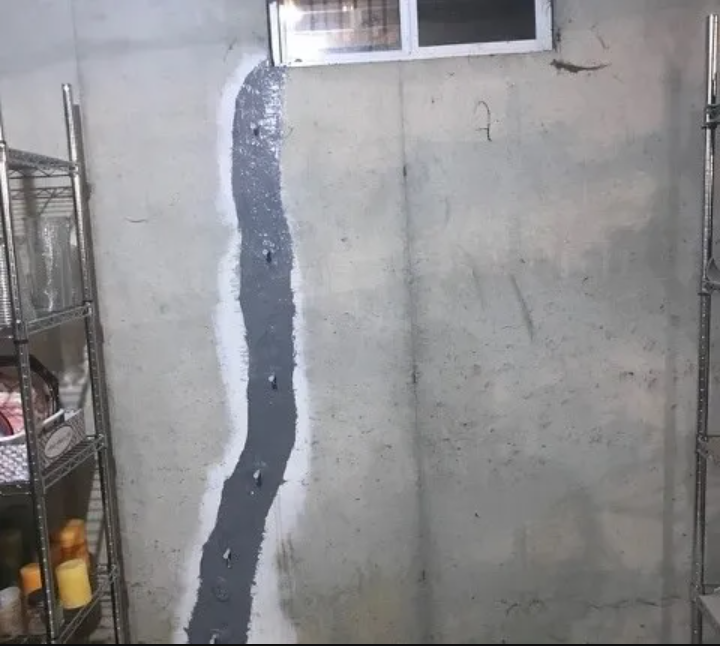
Factors to Consider Before Repair
When it comes to foundation crack repair, not all cracks—or homes—are created equal. Your approach should be as measured as the problem demands. Here’s what to weigh before you dive in:
- Severity: Start here. A hairline crack can be a shrug, but a gaping horizontal fissure? That’s a red flag, possibly waving at structural failure. Are we talking cosmetic or catastrophic? Let size and shape guide your urgency.
- Material: Brick foundations, concrete slabs, stone walls—they each crack their own way and demand their own fixes. Applying a one-size-fits-all repair could mean throwing money at temporary solutions.
- Age of Home: An 1800s farmhouse is a different beast compared to a mid-century suburban abode. Older homes often require more nuanced (read: labor-intensive) fixes since their foundations weren’t built for modern stresses.
- Cost: Let’s be real—foundation repair isn’t cheap, and it’s definitely not DIY weekend project territory. Costs can run from a few hundred dollars for minor sealing to tens of thousands for structural overhauls. Know your numbers before committing.
Here’s the smart play: gather multiple expert opinions. An inspection or consultation fee now could save you from sinking money into the wrong solutions later. Take your time, but don’t take forever—those cracks aren’t waiting for you to make up your mind.
Preventing Future Foundation Cracks
Foundation repairs can be costly, so prevention is your first (and best) line of defense. Luckily, it’s not rocket science—most of it boils down to being mindful of how water, soil, and your landscaping interact with your home. Here are some straightforward steps to keep future cracks at bay:
- Improve Drainage: Water is your foundation’s nemesis. Start with the basics: make sure your gutters are clear and in good working order, and add downspout extensions to channel water at least 6 feet away from your home. If the ground around your foundation slopes toward your house, regrade it to slope away. The goal? No standing water near your foundation, ever.
- Control Moisture Levels: In areas like Dover, MA, soil moisture can swing wildly with the seasons, expanding when wet and contracting when dry. Keep it consistent by watering the soil around your home during summer droughts and ensuring it doesn’t oversaturate during rainy periods. A little effort here can save you big headaches later.
- Correct Vegetation Placement: Think twice before planting that maple tree a little too close to your foundation. Large trees and shrubs have root systems that can disrupt soil and even exert pressure on your home’s walls over time. A good rule of thumb: plant trees at least as far from your house as their expected mature height.
- Regular Maintenance: Make a habit of walking around your home once a year and inspecting the foundation. Look for any new or worsening cracks, water pooling, or soil erosion. Catching small issues early means you can address them before they snowball into major problems.
By staying ahead of these factors, you’ll save your foundation some serious stress—and spare yourself the ordeal of extensive repairs. Prevention isn’t glamorous, but it’s a solid way to keep your home safe.
Choosing Professional Help for Foundation Crack Repair Dover MA
When it comes to foundation crack repair, picking the right contractor isn’t just a good idea—it’s essential. The integrity of your home depends on it. You’re not just patching up a problem; you’re investing in the structural health of your property. Here’s how to make the right choice without getting lost in the sea of options.
- Look Local, Think Specialized: Contractors with local experience understand Dover’s unique challenges: freezing winters, humid summers, and soil that plays tug-of-war with your foundation. A specialist who’s navigated these variables before will be better prepared to tackle cracks the right way the first time.
- Check for Credentials: Don’t just take their word for it—ask for proof. The contractor should hold proper licensing and up-to-date insurance. While you’re at it, check for certifications in specific foundation repair methods, like epoxy injection or carbon fiber reinforcement, to ensure they’re equipped for the job.
- Review and Vet References: A reliable contractor will offer a list of past customers who can vouch for their work. Call them. Ask about timelines, costs, surprises, and whether the repair has stood the test of time. Online reviews are useful too but lean on firsthand accounts when you can.
- Demand Clarity in Estimates: A solid contractor provides more than a number; they explain the “why” behind every dollar. Request a detailed estimate that breaks down labor, materials, and timelines. If you hear vague promises like “we’ll figure it out as we go,” that’s your cue to walk away.
- Gauge Their Communication: From the first call to the final invoice, clear and timely communication is key. Are they responsive? Do they answer your questions without dodging? A lack of professionalism in the planning stages often translates to poor execution later.
In Dover, MA, where extreme weather and shifting soils are facts of life, settling for anything less than a professional foundation crack repair contractor isn’t an option. A bit of diligence upfront will save you from long-term headaches—and costs—down the road. opt for pros who bring knowledge, transparency, and proper tools to safeguard your home’s foundation, one crack at a time.

Closing Thoughts
Foundation cracks are a reality of homeownership, but they don’t have to turn into a nightmare. In Dover, MA, where the climate and soil can be notoriously unforgiving, vigilance goes a long way. These cracks might start small—a hairline you’d barely notice—but waiting to address them can invite creeping water, stubborn structural shifts, and repair bills you’d rather avoid. The good news? With the right knowledge and trusted professionals on your side, the fix is usually well within reach.
Just remember: cracked doesn’t mean broken; it means you’ve got a chance to reinforce and protect what matters most. Whether it’s a quick injection, bolstered support, or a grading adjustment, tackle foundation issues before they tackle you. Your home’s stability—and your peace of mind—depend on it.
Reviews from Happy Customers
Our top priority is customer satisfaction, and we work closely with clients to understand their unique needs and goals.




